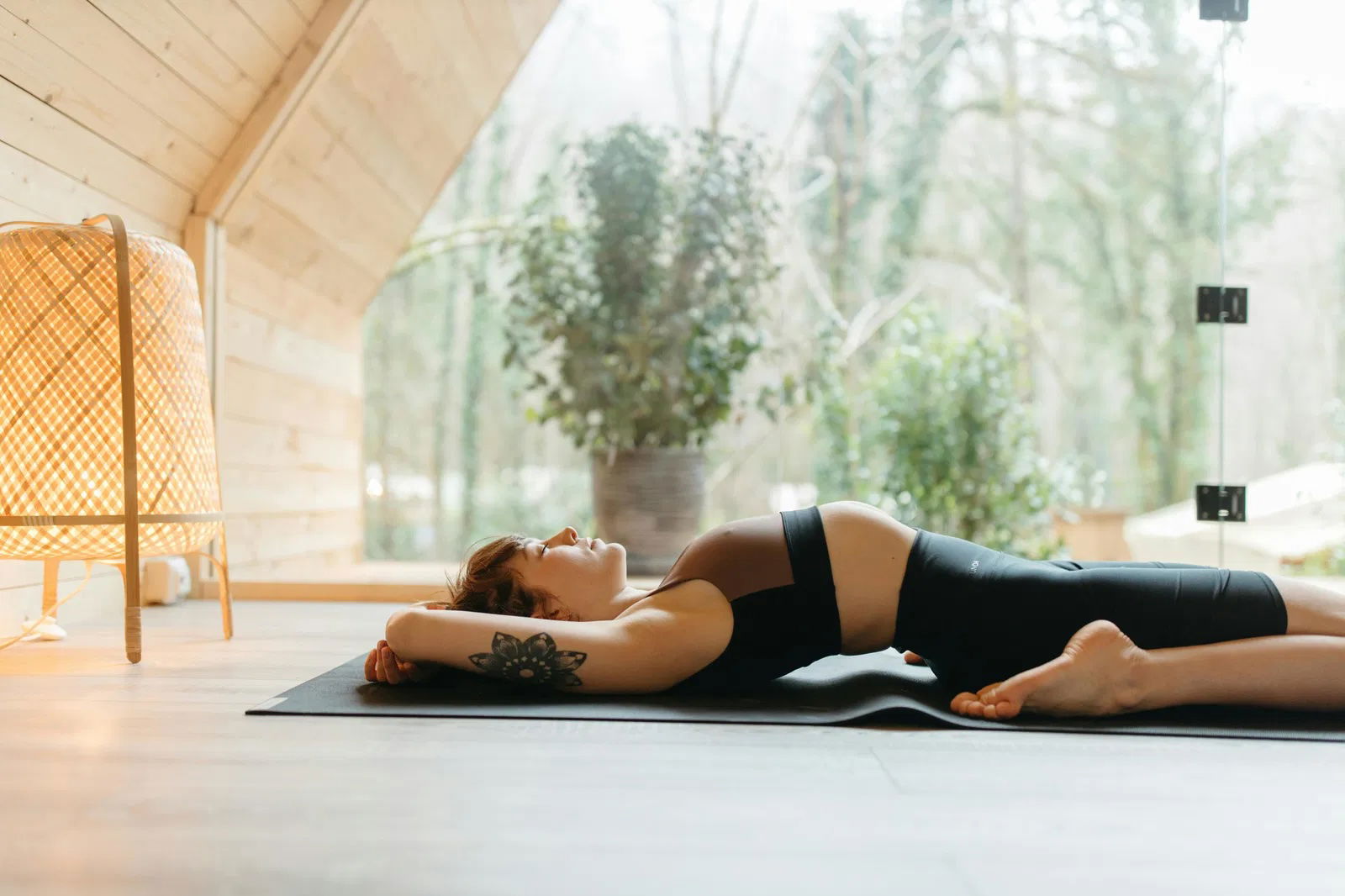Yoga Nidra, also known as "yogic sleep," is a meditation technique that involves quieting the body and mind to enter a state of "conscious deep sleep. This allows your body to recharge and recover in a short period of time.
In this article, we discuss step by step what such a Yoga Nidra session looks like and tell you which Yoga Nidra exercises you can choose yourself for inner peace, better sleep and more relaxation.
What Yoga Nidra exercises are there?
During a Yoga Nidra meditation, a voice guides you through a series of meditation exercises. This process causes you to surf between waking and sleeping; your brain moves from the active beta state toward the alpha and theta state and finally enters the delta state. This allows your body to deeply relax and heal in a short period of time.
There is no one right way to practice Yoga Nidra. A session often consists of a number of set components, such as storytelling, breathing exercises, body scan and visualization. The order and content of these parts depends on the theme of the session.
Based on your own needs at that moment, you choose an appropriate session. Always ask yourself: what do I need at this moment? Is it deep relaxation, releasing worries or new, fresh energy?
Although most Yoga Nidra sessions are unique, a session often consists of the following meditation exercises:
1. Relax the body
It is important in Yoga Nidra to lie down in a comfortable position so that it is easier to relax. You can lie down on a yoga mat or even in bed. Have a blanket handy in case you get cold and put a pillow under your knees if necessary. Once you have found a comfortable position, begin the guided meditation.
2. Set an intention
Once you have calmed your body, you can set an intention. What is your intention for this session? Is it relaxation, energy or self-exploration? By working with an intention, you create more depth in your session.
3. Visualization
Often visualization is used during Yoga Nidra to calm the mind. During visualization, you focus on a particular image. This breaks the flow of thoughts that normally go through your mind.
In the Meditation Moments app, there are a number of images that often recur during visualizations, such as bright white light, a flower garden and the temple of wisdom.
4. Bodyscan
During this part you connect with different body parts. Do you notice thoughts emerging? Bring your focus back to your breathing or direct your attention to the voice. Pass your awareness along the different body parts and send loving energy to this place.
5. Closing
A session often concludes with a wish or resolution. Within Yoga Nidra this is also called a 'Sankalpa'. You always choose a Sankalpa at the end of the session. Your body is completely relaxed at this moment, which makes you decide from your intuition and not from your thinking mind.
Yoga nidra app
Want to experience the benefits of Yoga Nidra for yourself and are you looking for a yoga nidra app? In the Meditation Moments app you can find different Yoga Nidra exercises that provide relaxation, deep sleep or more inner peace. You can do the exercises at any time of the day.
The Yoga Nidra exercises in the Meditation Moments app range from 15 to 30 minutes and are narrated by Michael Pilarczyk. You can find the Yoga Nidra sessions in the Yoga Nidra collection.
Try Meditation Moments 7 days for free
Start free trial





















